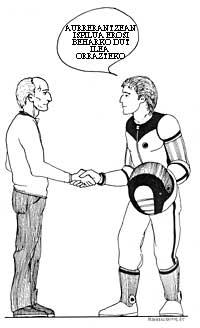Relativity
Although we do not believe, when Einstein exposed the theory of relativity he not only turned upside down the structures of science, but also those of thought.

Let us explain with an example what relativity is. From our house we see a train that passes to 80 km/h. A passenger who travels throws a ball in the same direction of the train at 20 km/h. For us the speed of this ball will be 100 km/h and for the traveler will be 20 km/h. But, in short, how much is the speed of the ball? The answer will always depend on the state of each observer.
Noting this event and recognizing that it is not possible to achieve speeds higher than that of vacuum (299793 km/s), the following conclusions were obtained:
- If a mass with respect to an observer moves at the speed of light, it becomes infinite for this observer.
- The time elapsed in a body moving at a speed around the light is less than the time elapsed in the observer (the movement of light would paralyze time).
This superior relativity is due only to the simplest relativities observed in our lives. Therefore, this occasion is perfect to say that science is done by working.
As a colophon to this little piece, we mix a little more the head.
Some stars are several years of light, that is, they are located several kilometers of light. Therefore, the light we see is emitted a few years ago, but that star may have disappeared. The question to be asked is does that star exist? (Thinking in relative terms, you can give a relative answer.)





